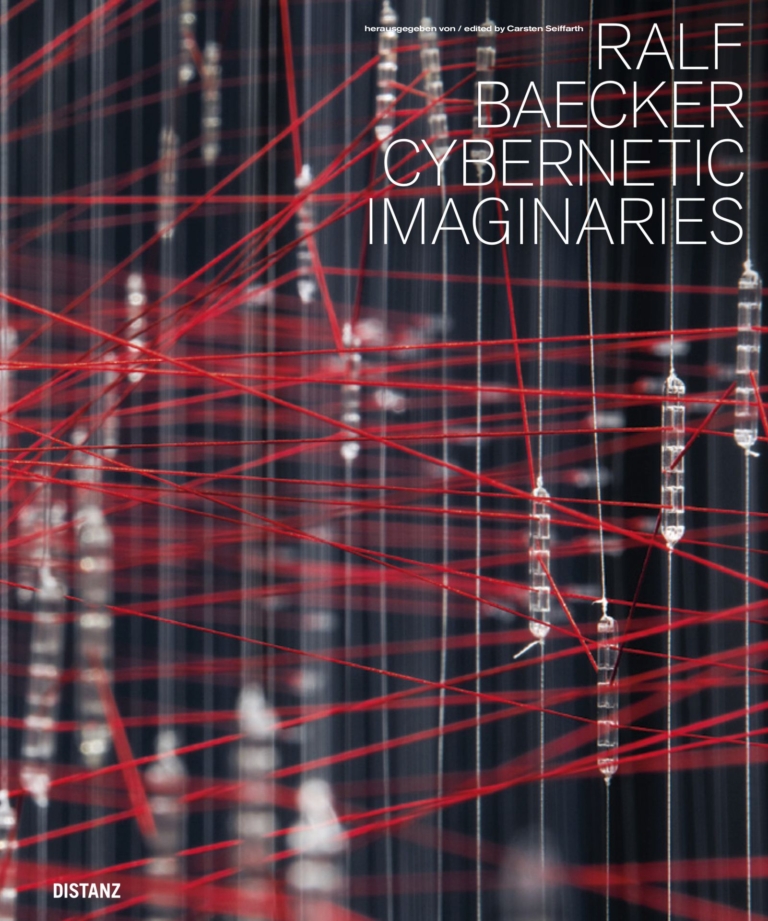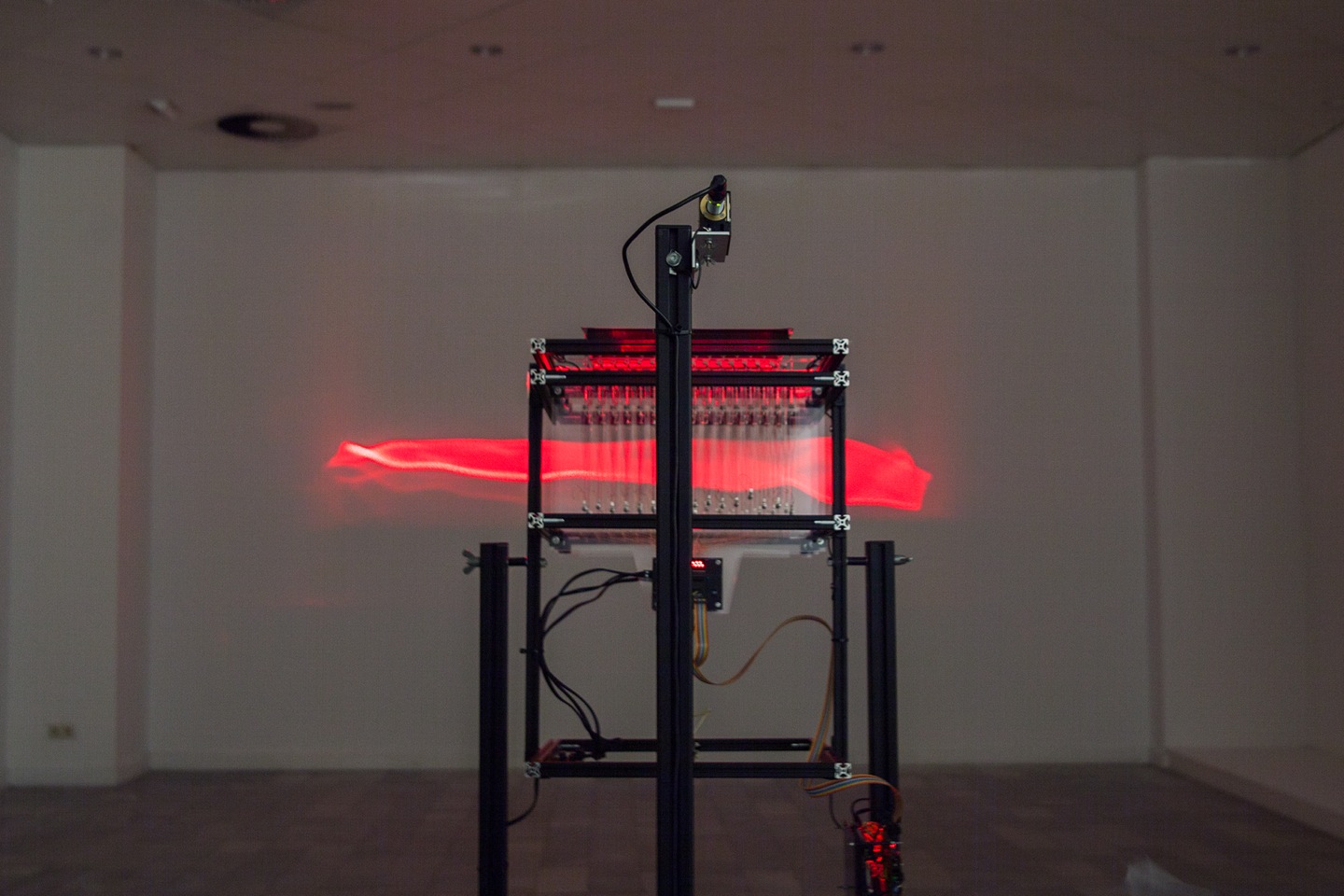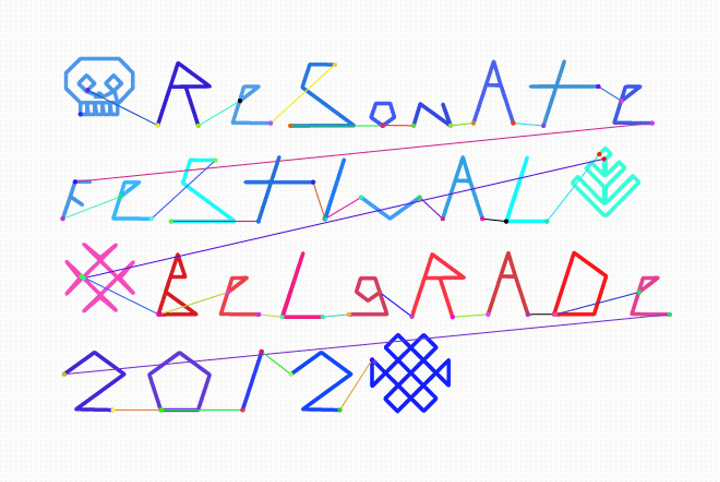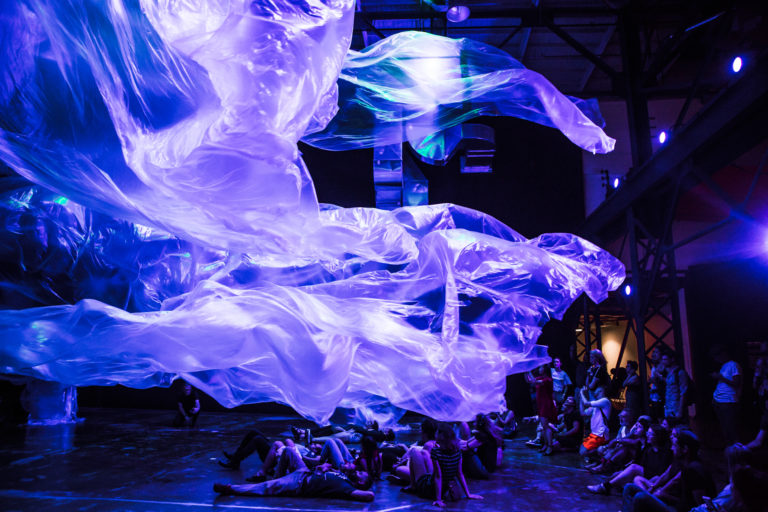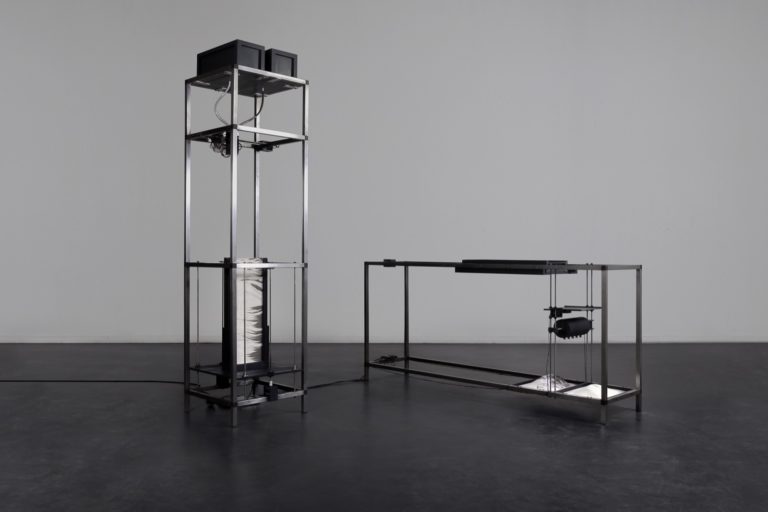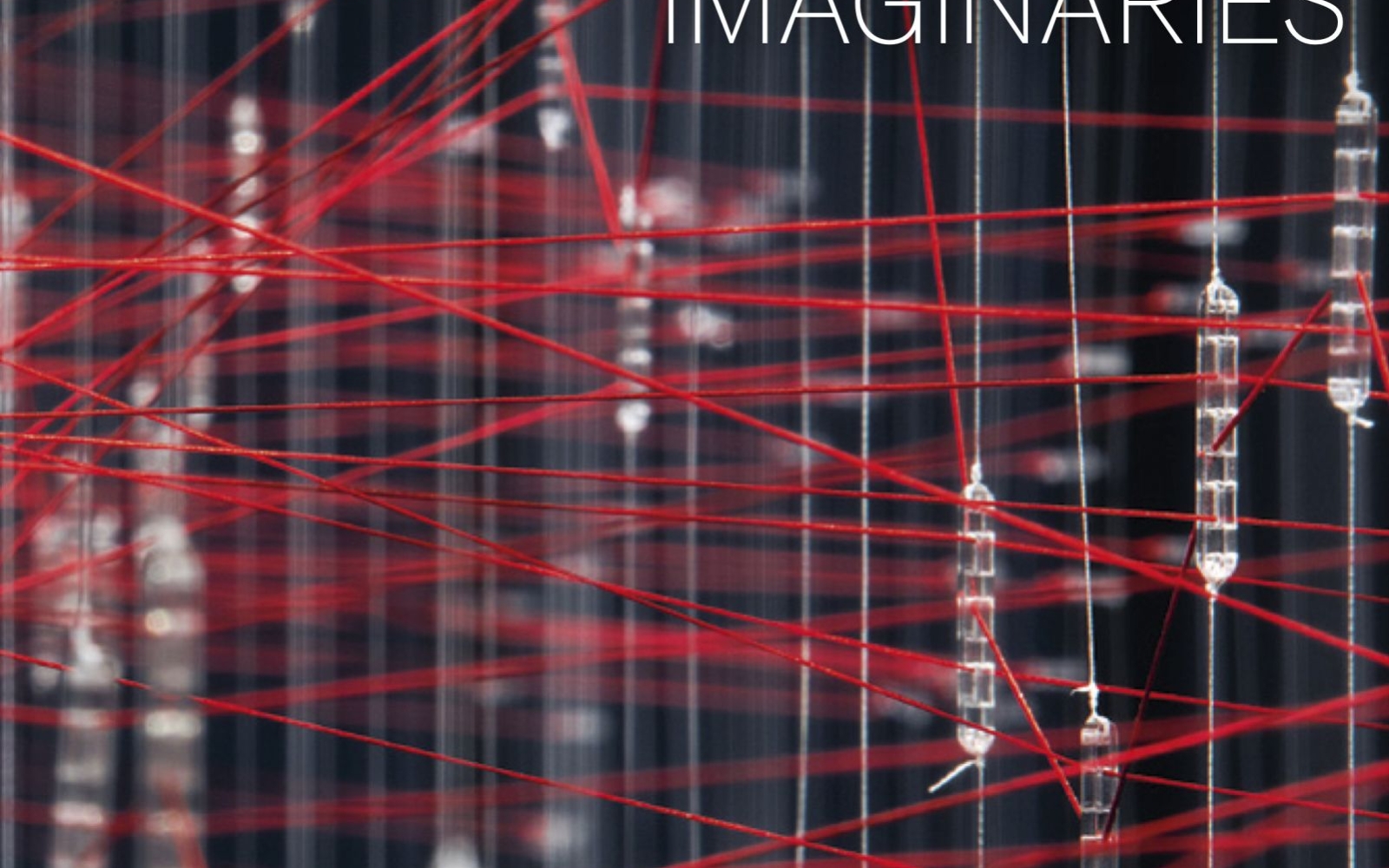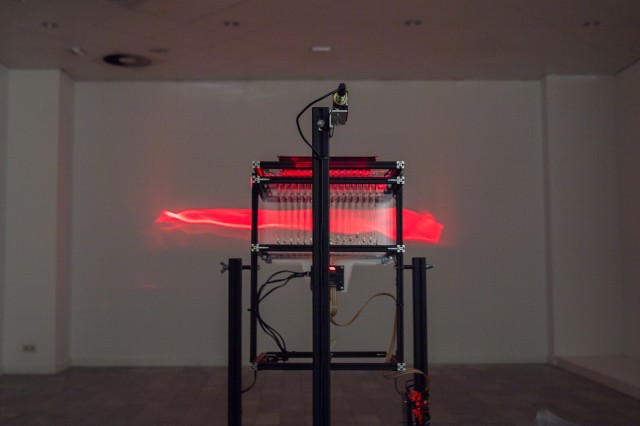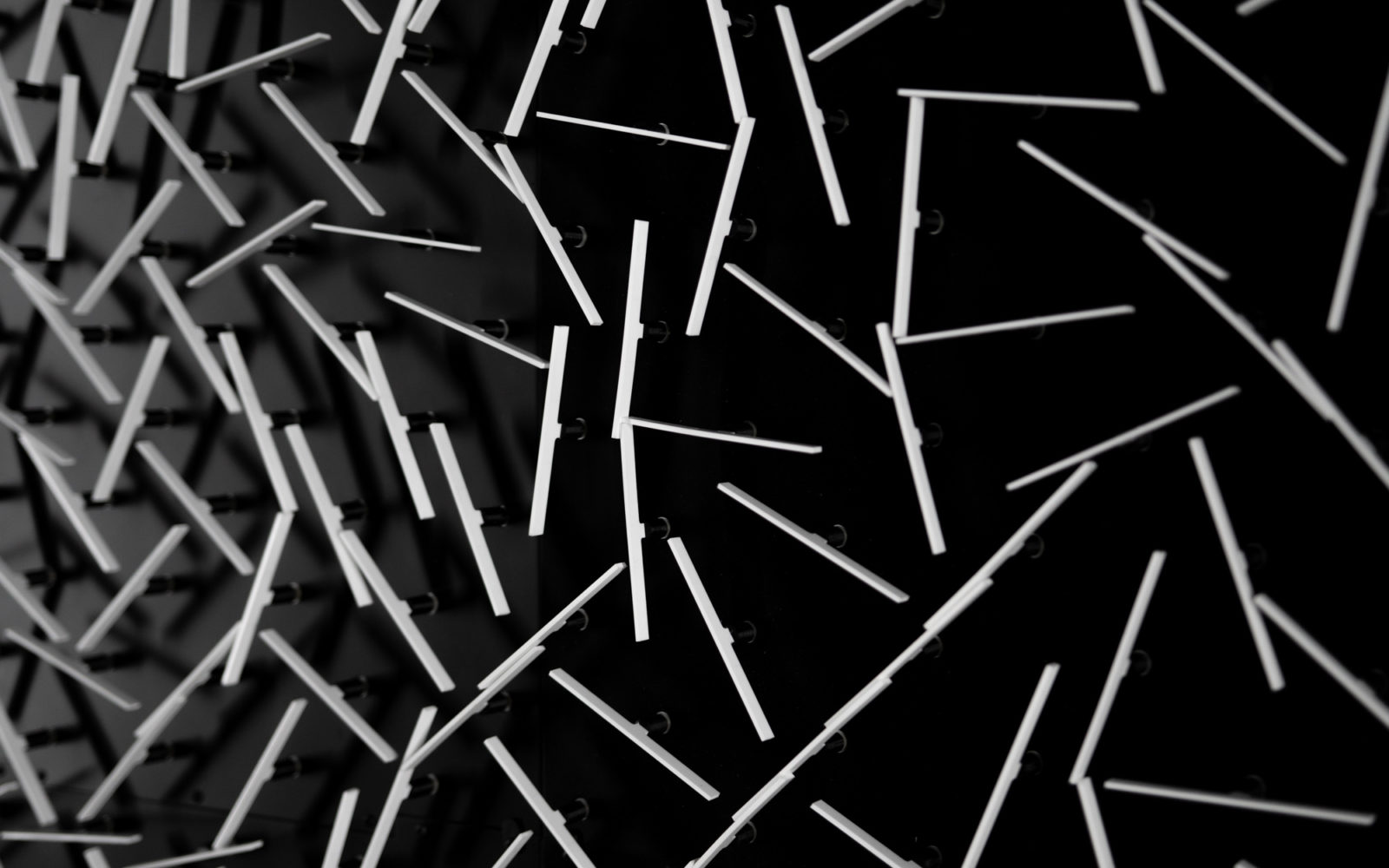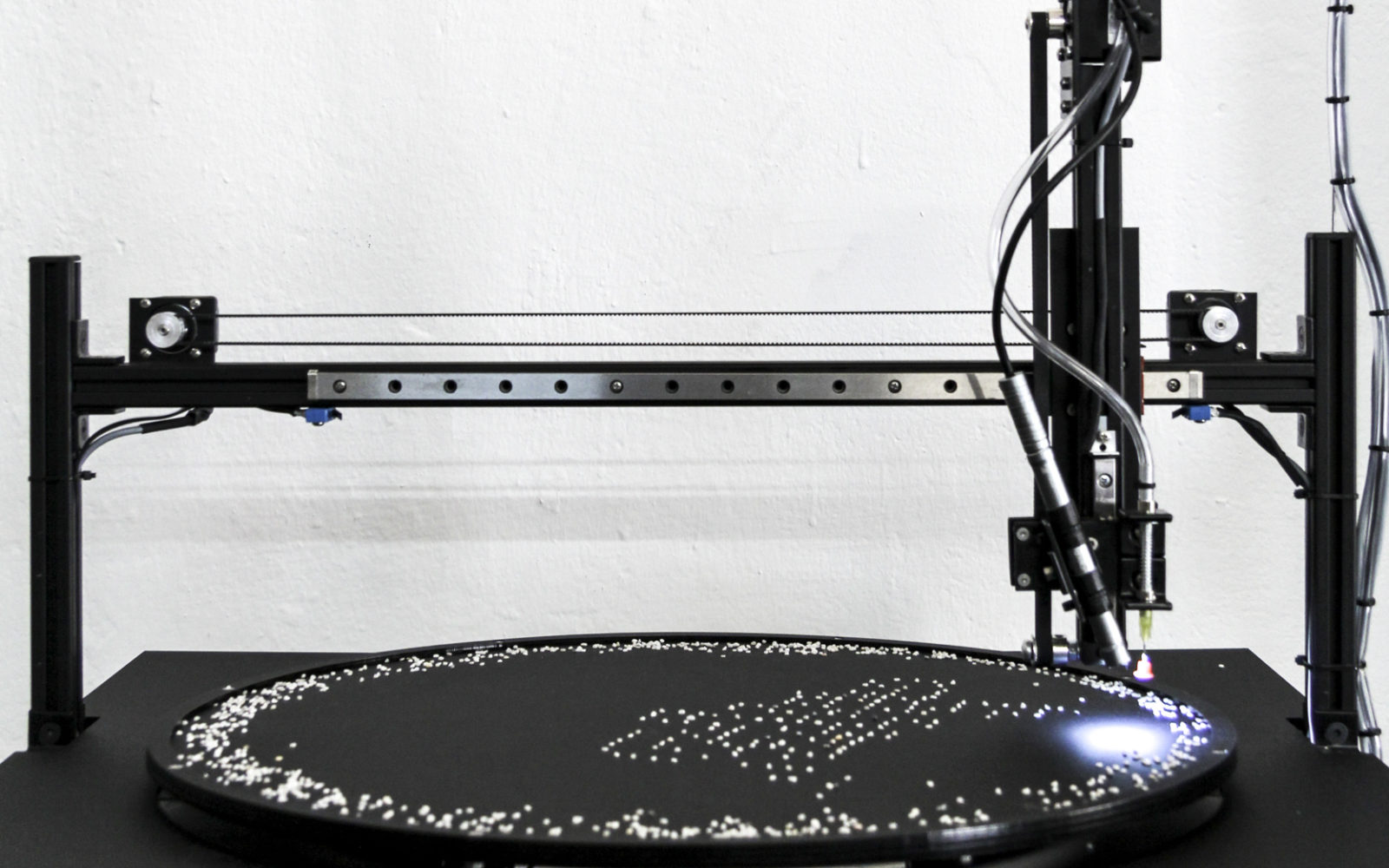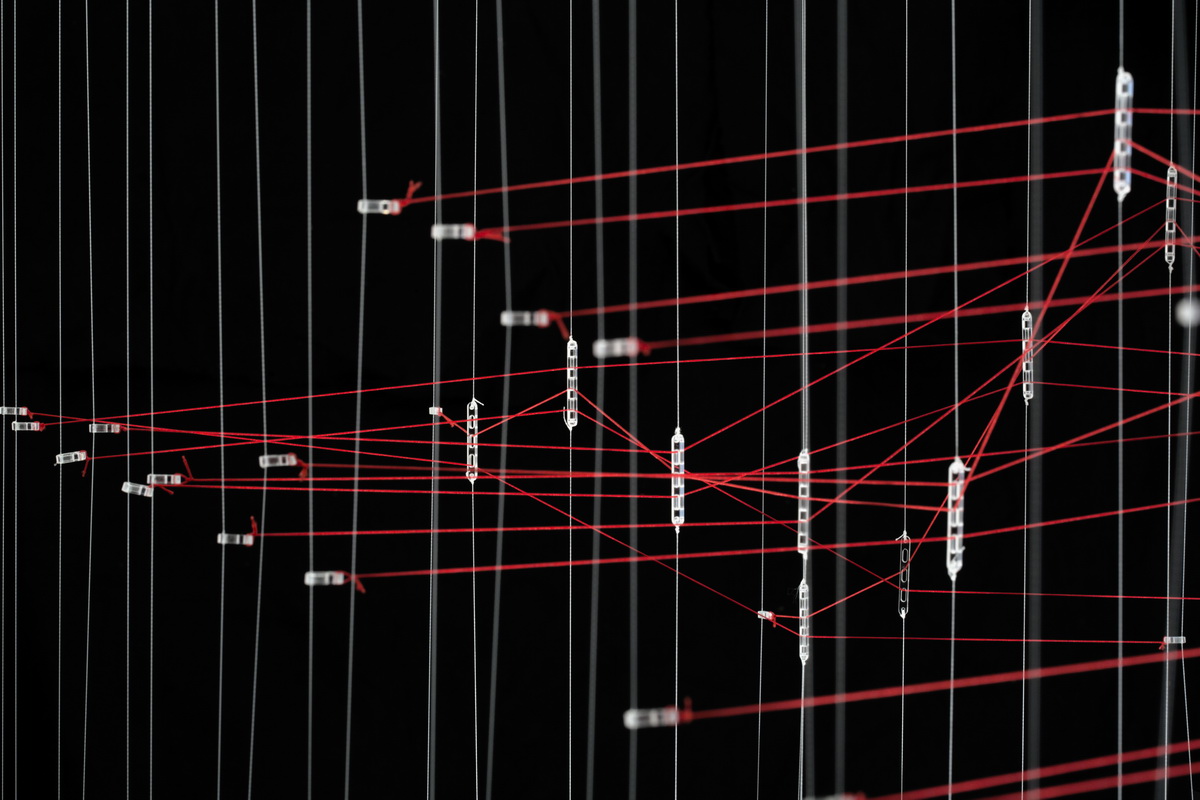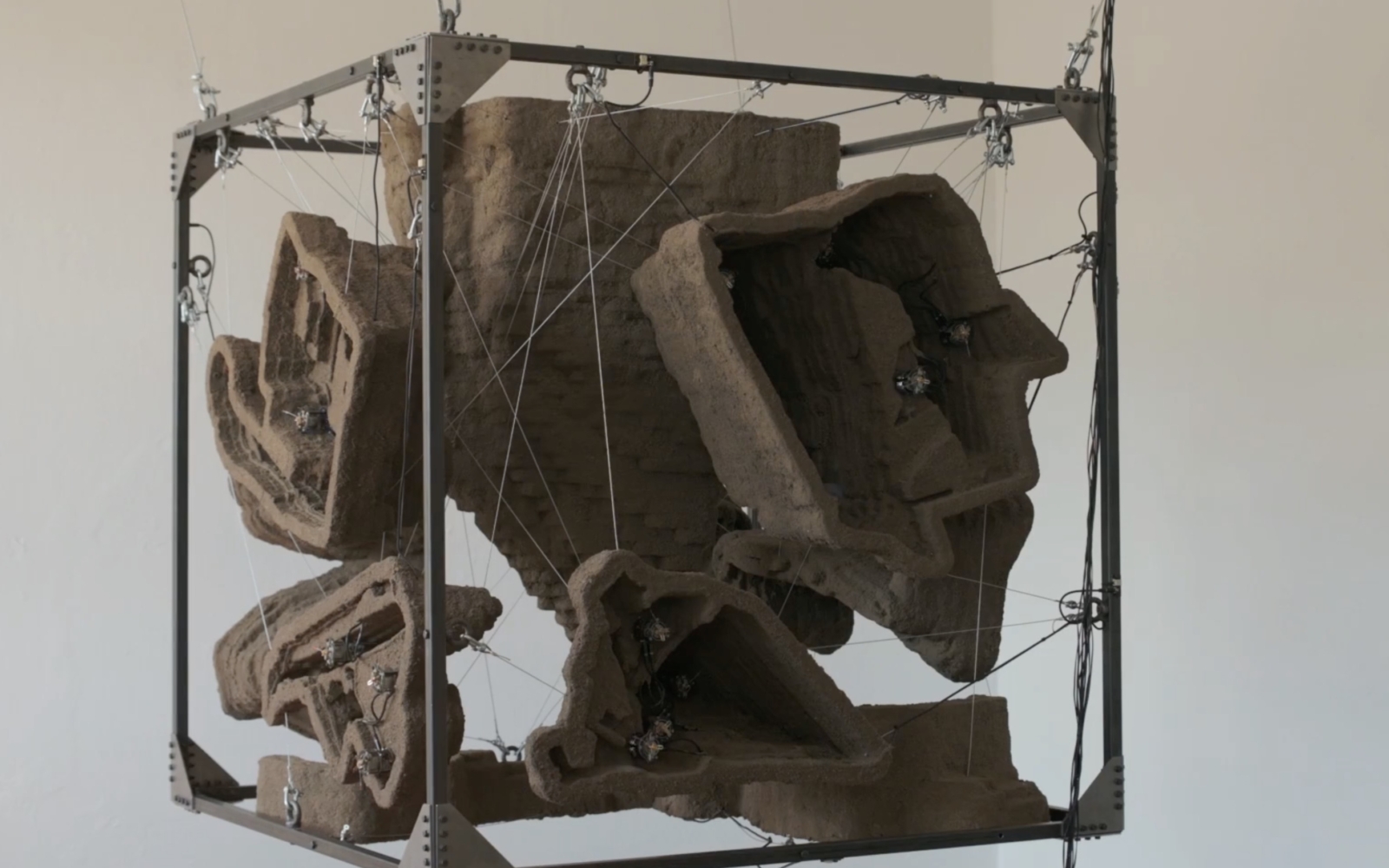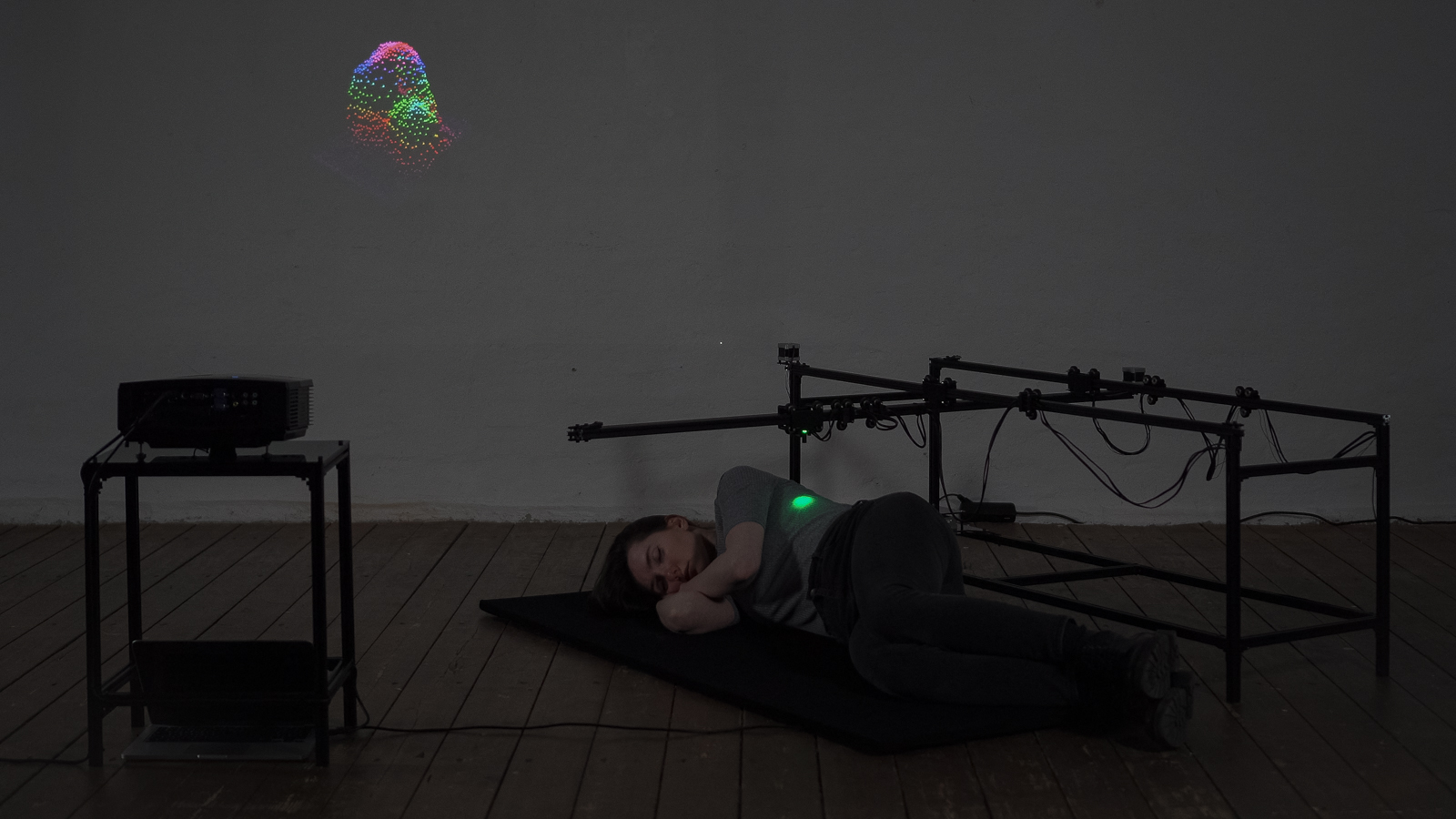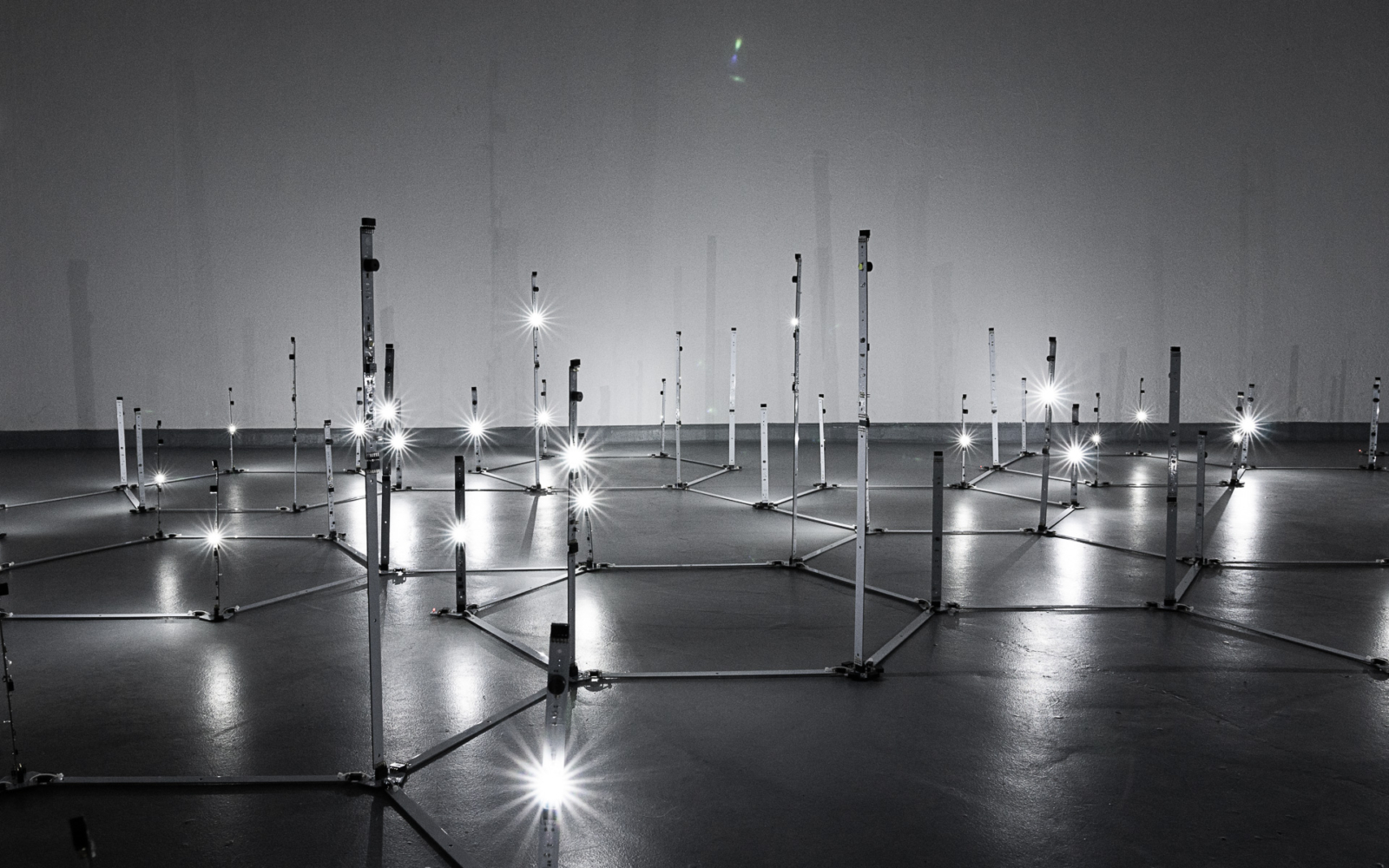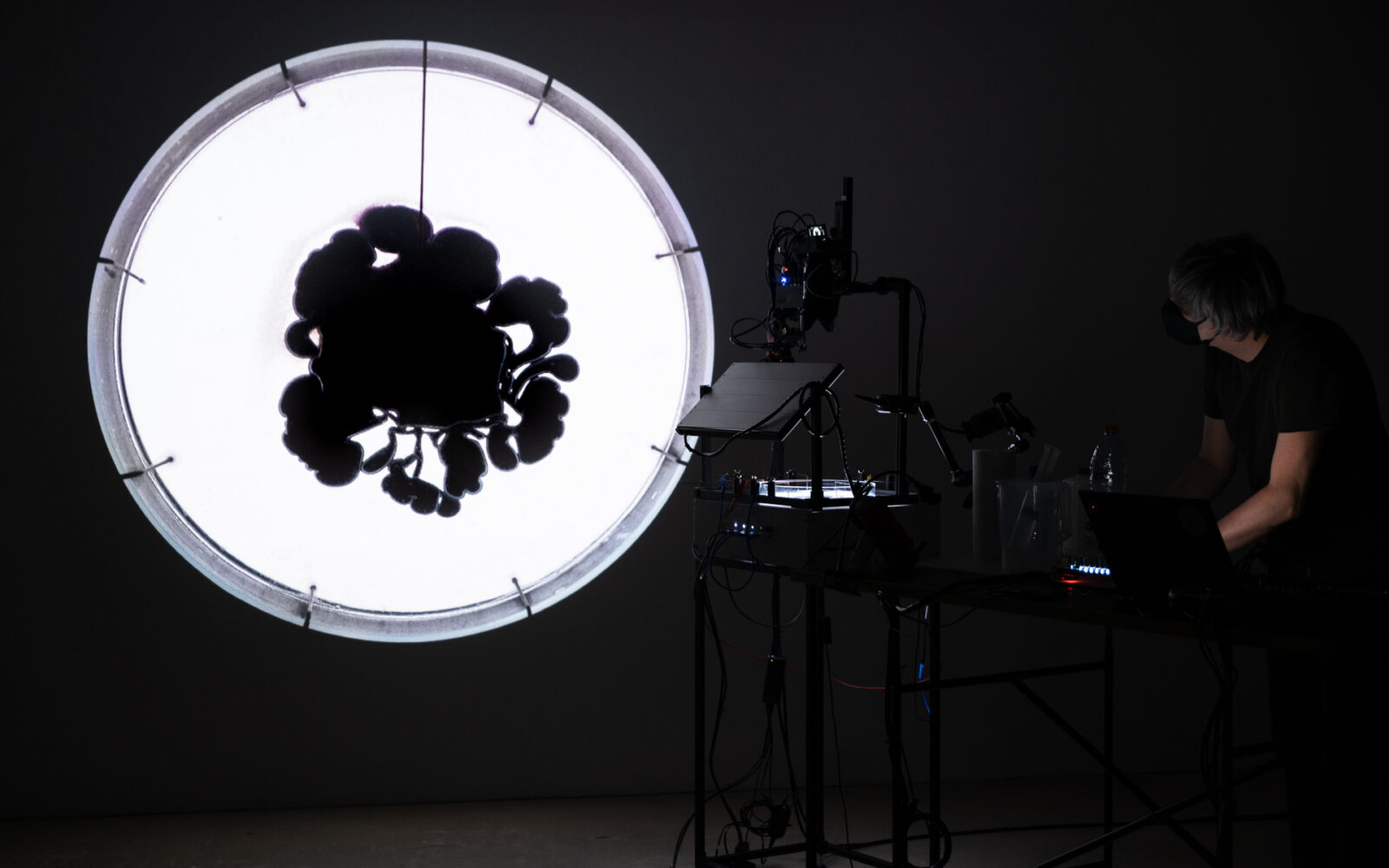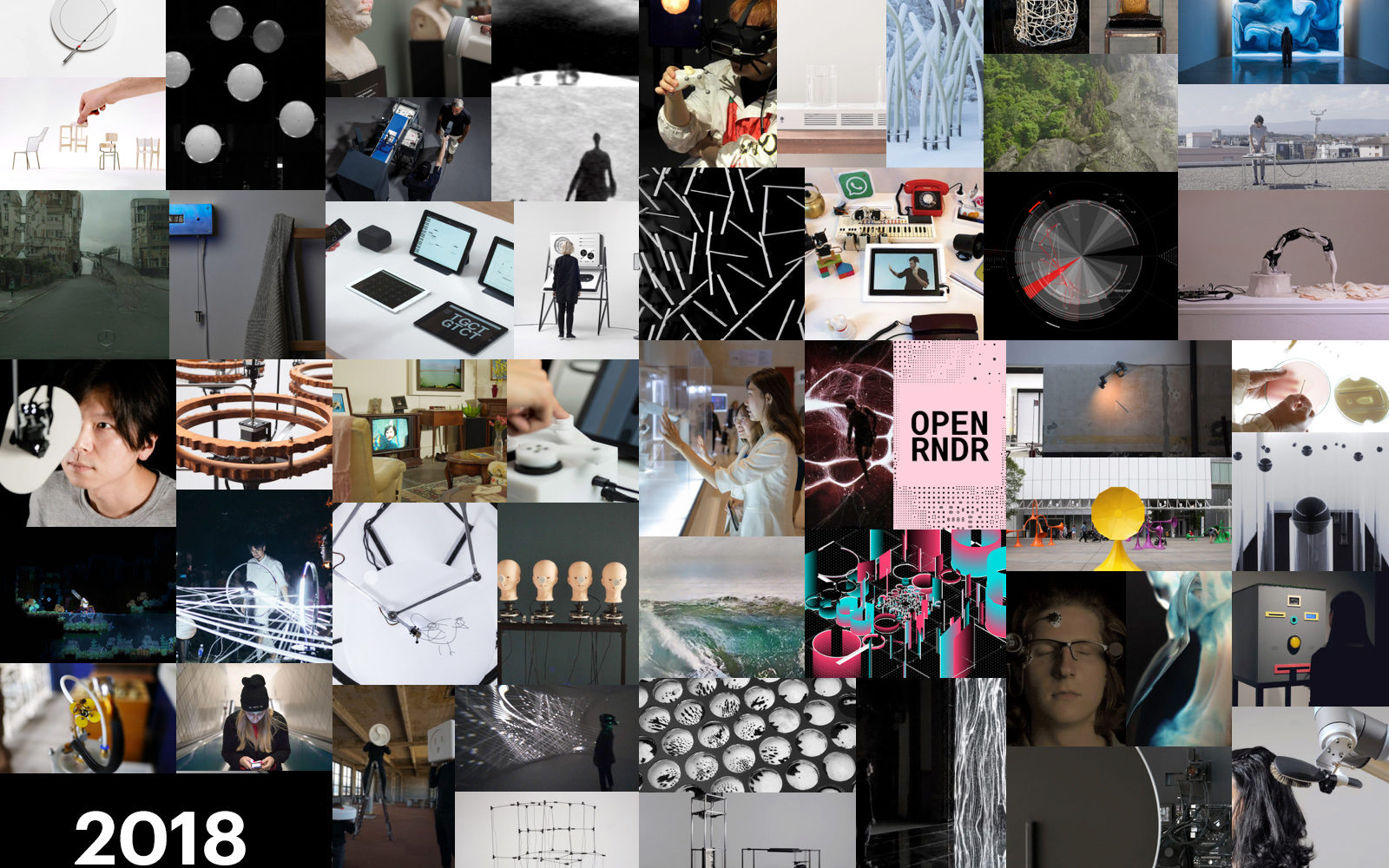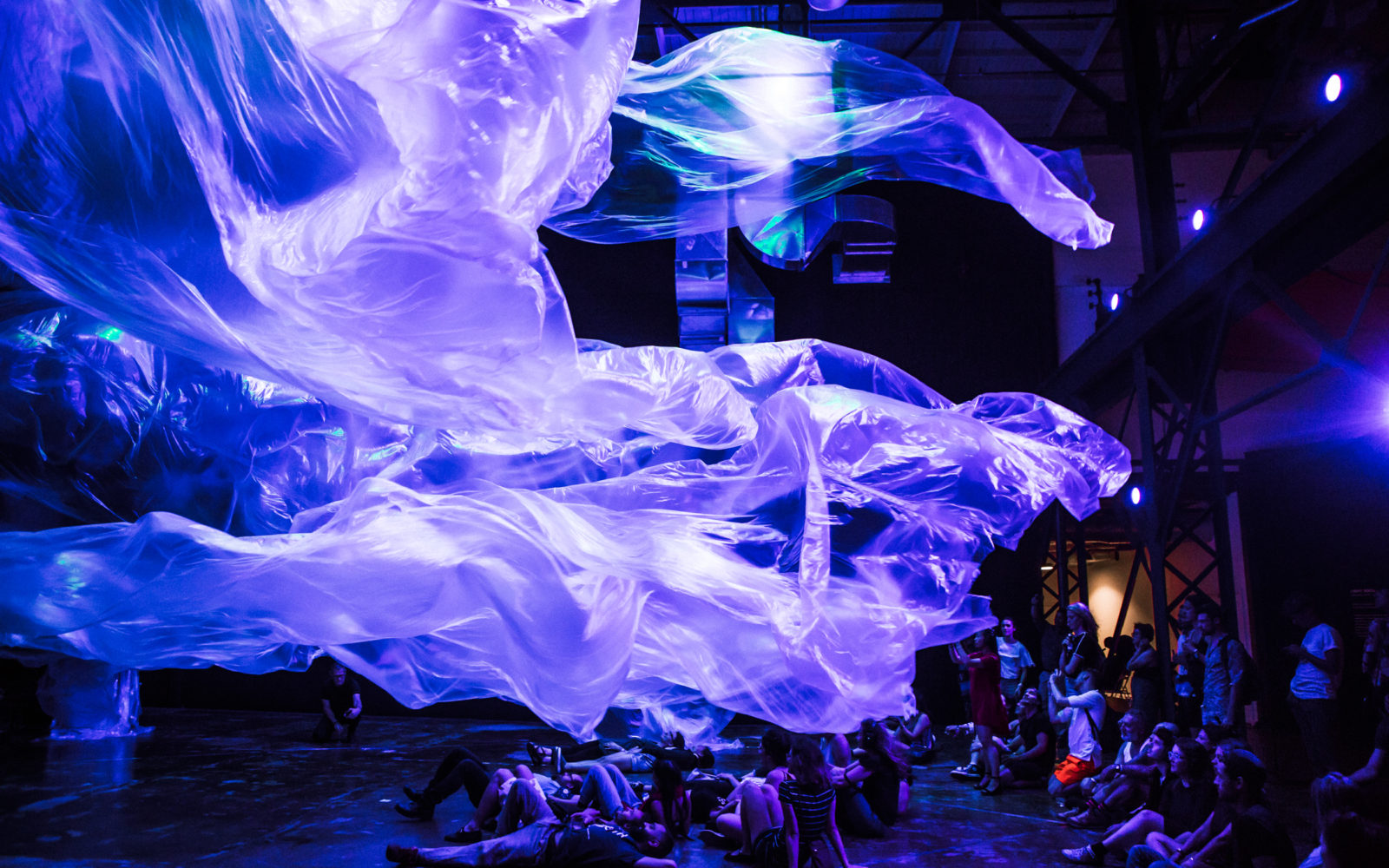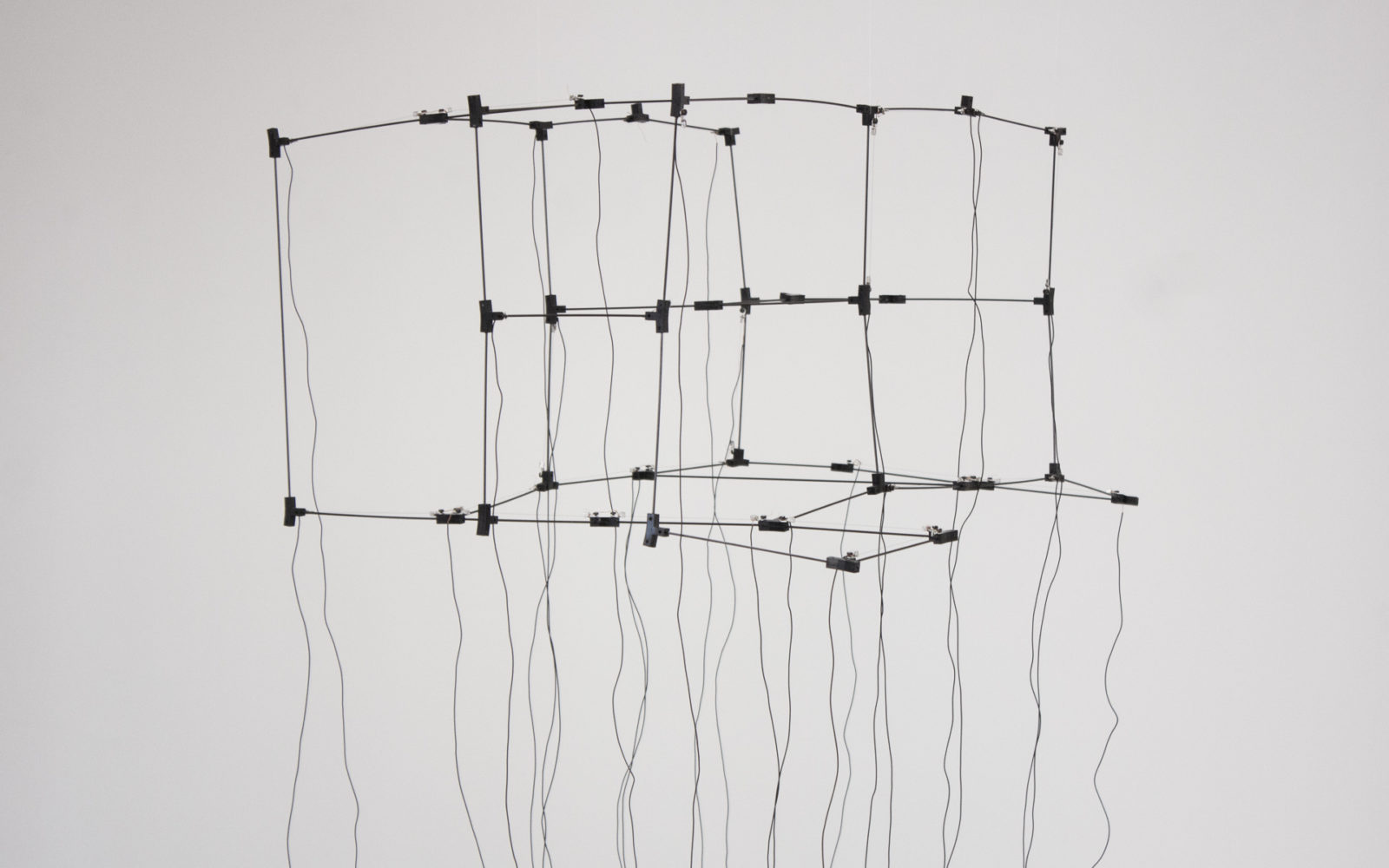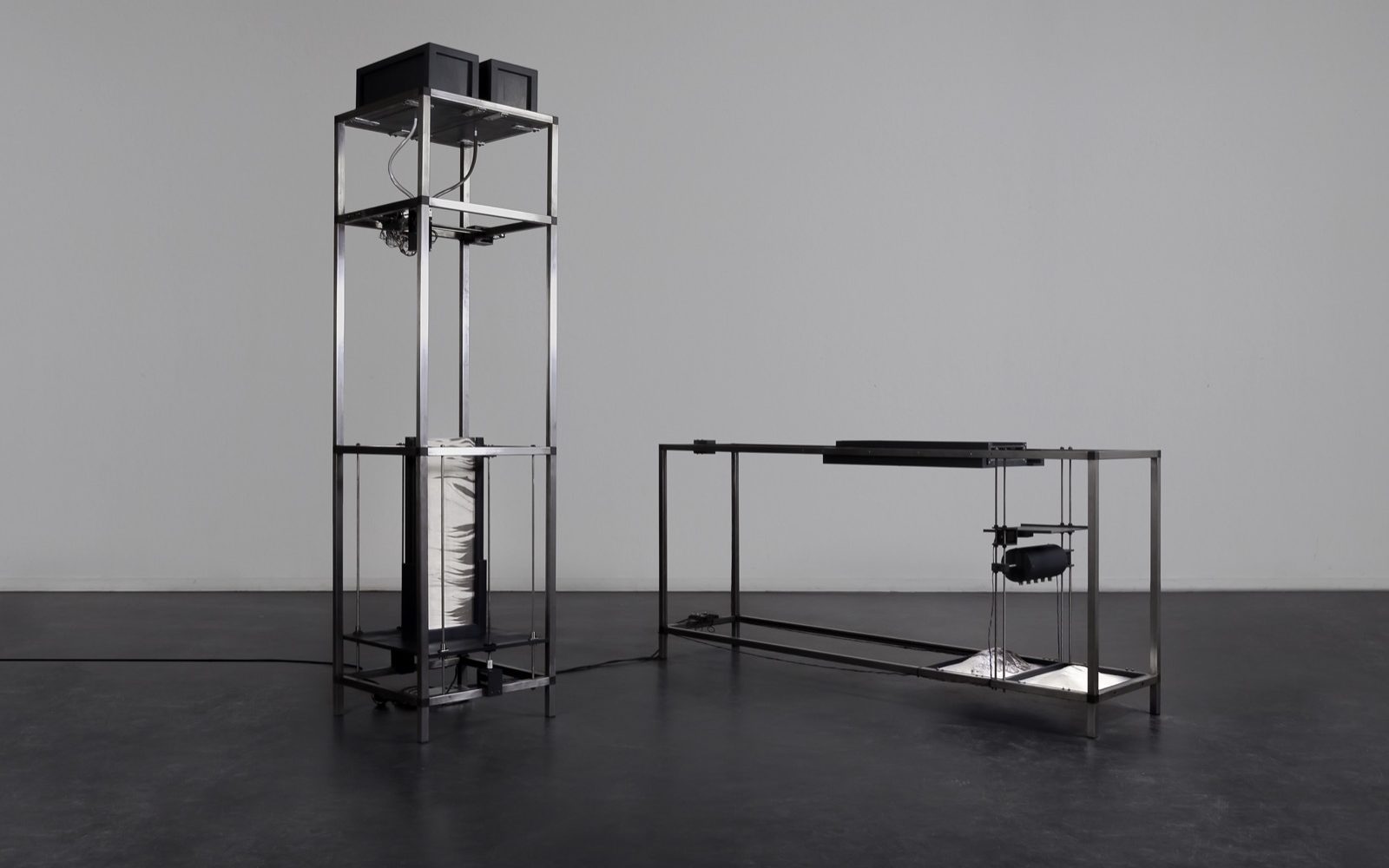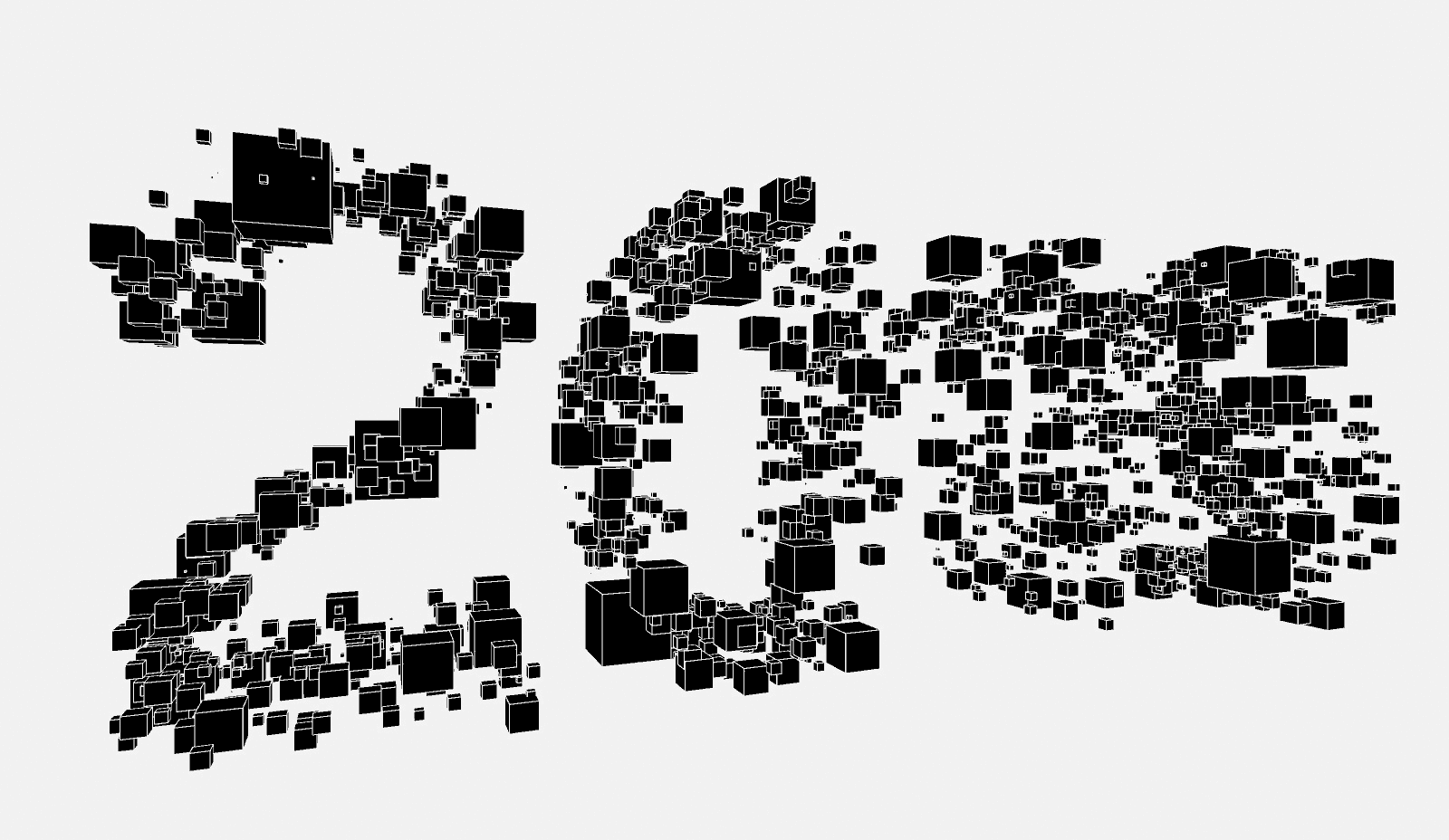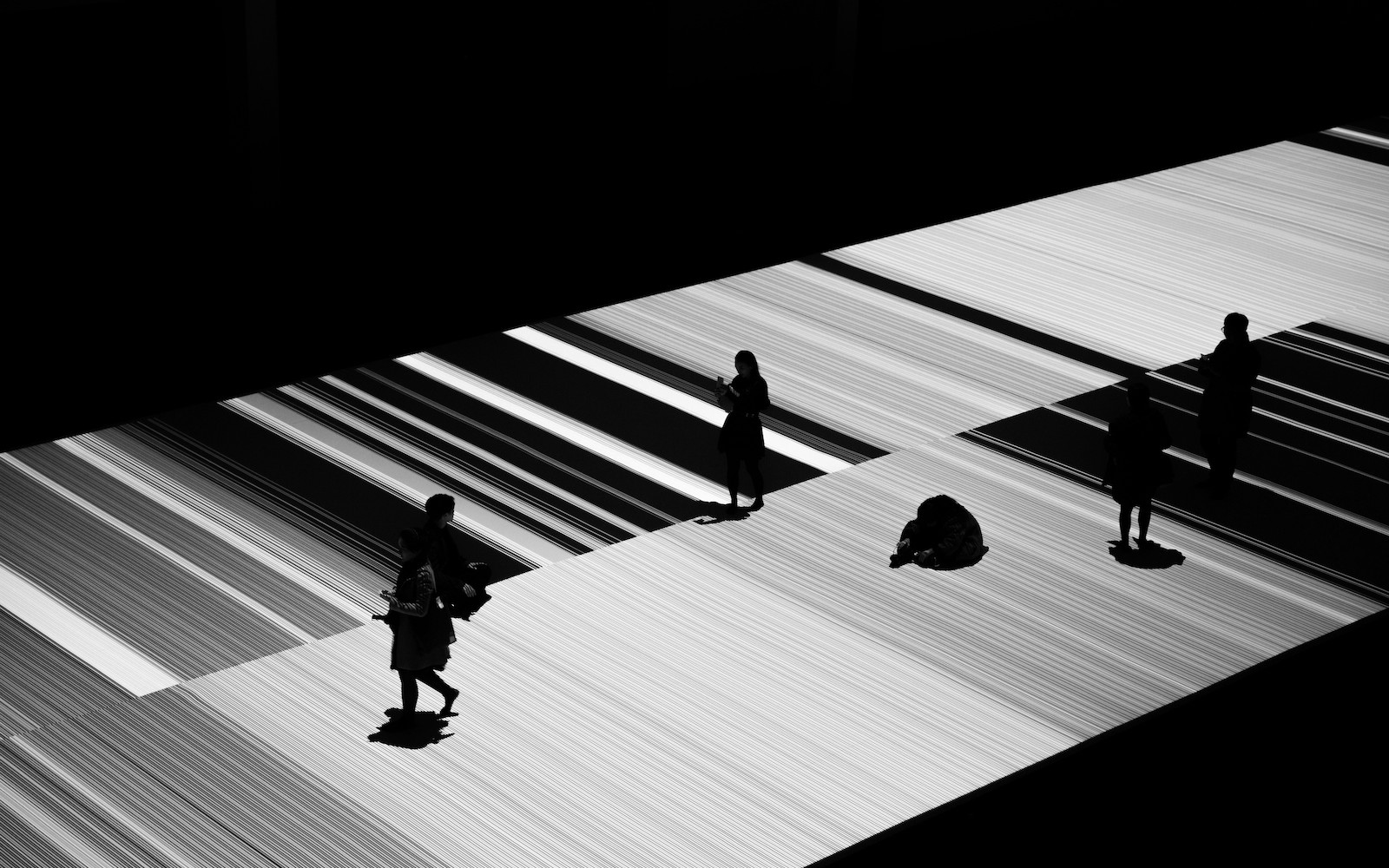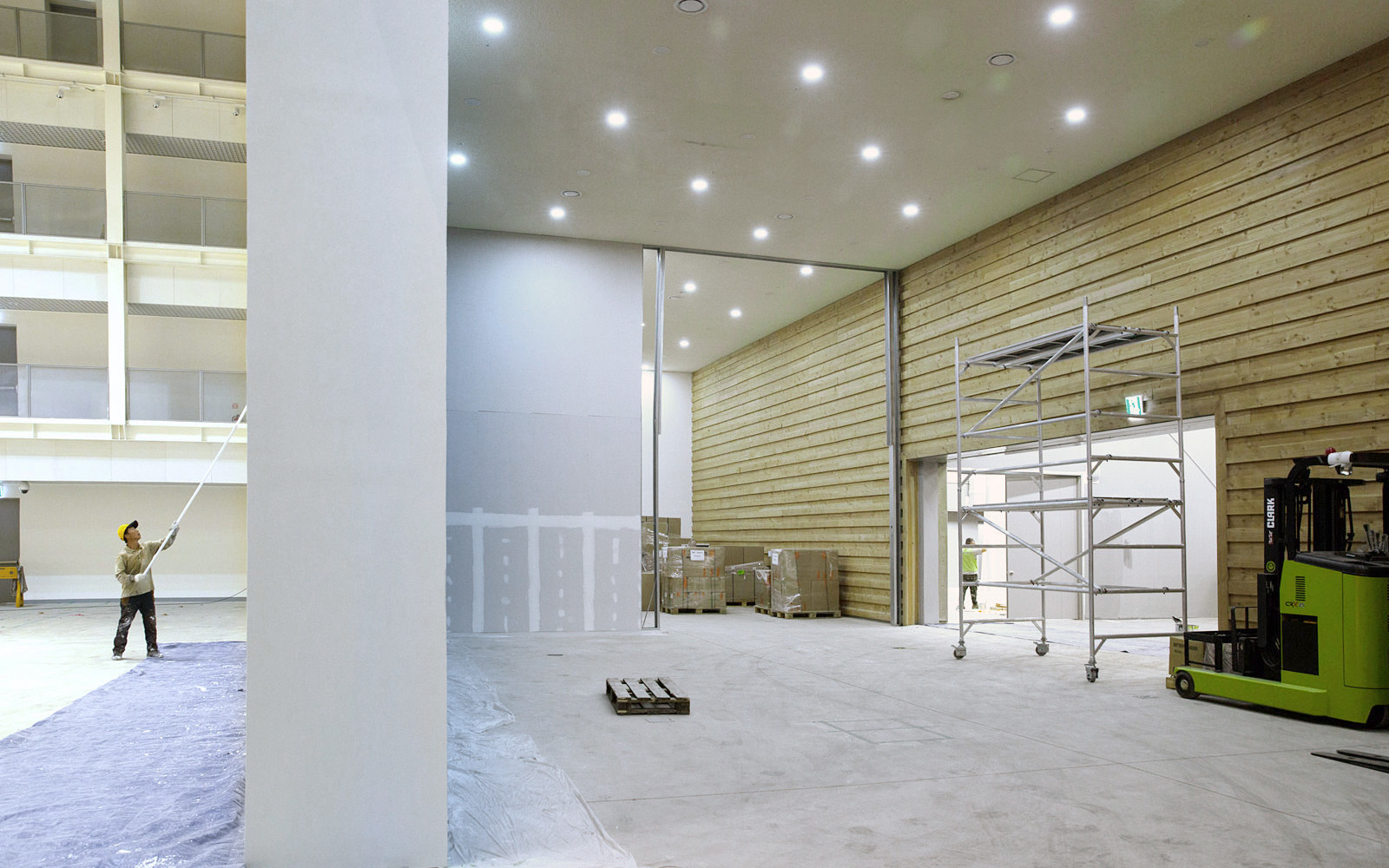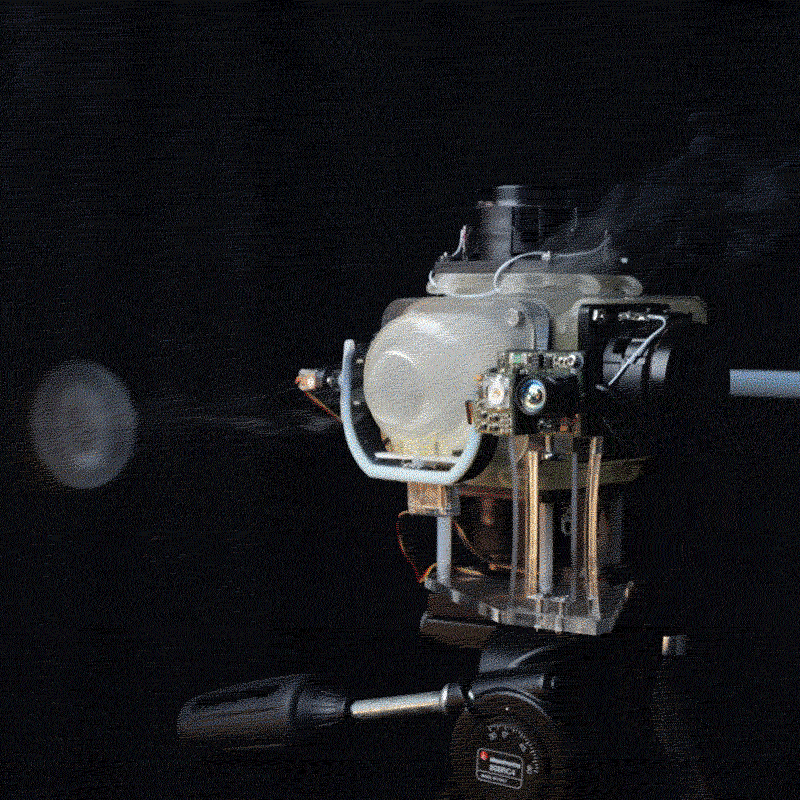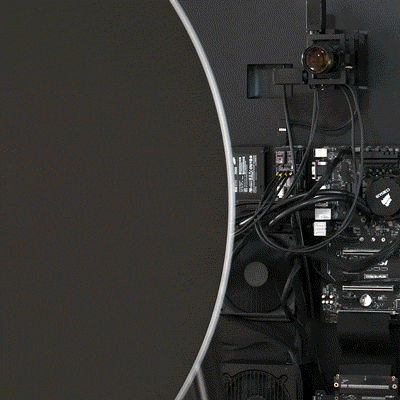/?s=Ralf Baecker
Displaying search results
19 Results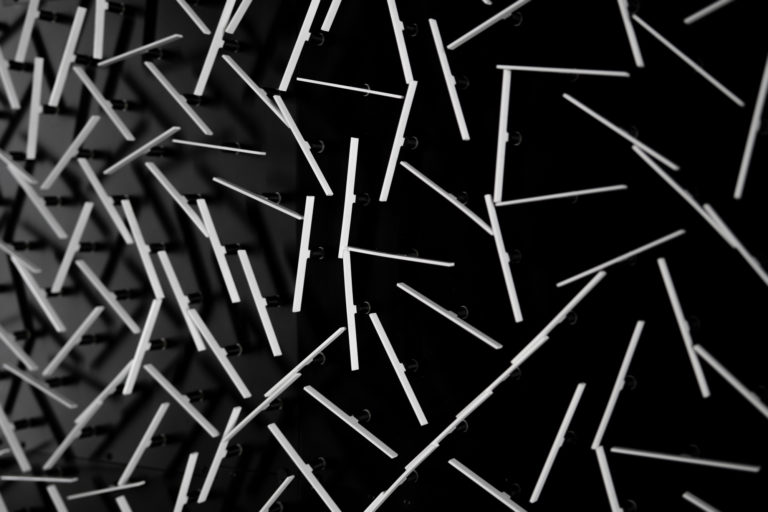
Created by Ralf Baecker, Putting The Pieces Back Together Again is an artistic investigation and meditation about complex systems and scientific methodology. Consisting of 1250 stepper motors arranged in a two dimensional grid, each motor in the installation moves in a random direction, sometimes intersecting and reversing direction, producing emergent constellations and behaviours.
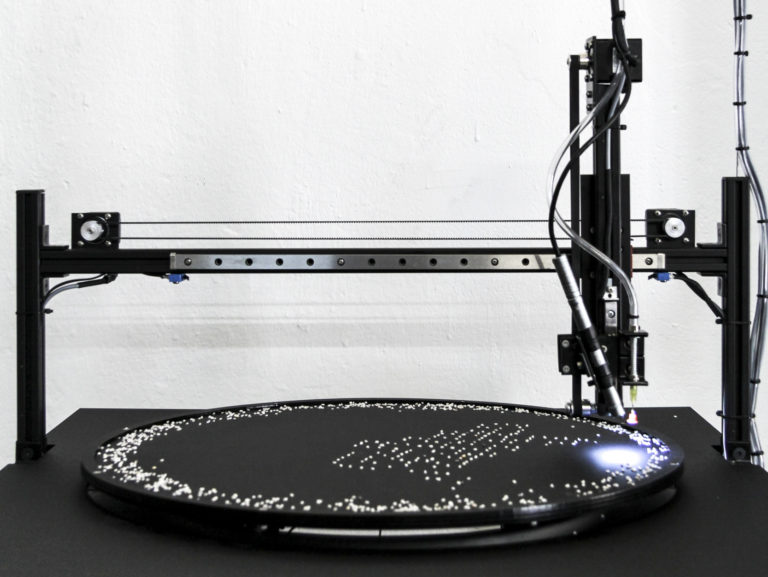
Created by Berlin based Ralf Baecker, Random Access Memory is a fully functional digital memory. Instead of operating on semi-conducting components to represent either the binary states of 0 (zero) or 1 (one), the memory uses grains of sand as storage material.
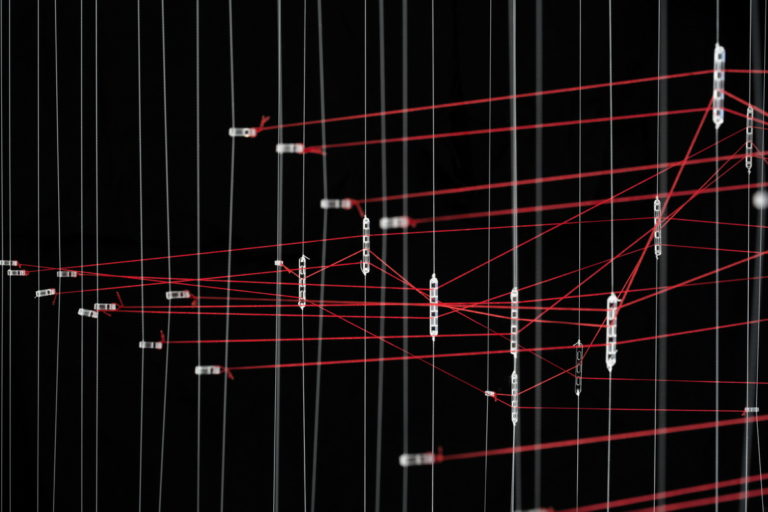
Created by Ralf Baecker and opening this week at the NOME gallery in Berlin, Order+Noise (Interface I) investigates the boundary and space created by two interacting systems that are set in motion by the random signals of Geiger-Müller tubes.

Created by Christine Brovkina at the University of Bremen, I!&3_OCR is a typography project exploring human-only legibility. It comprises a series of typographic experiments with OpenType and Variable Fonts technologies, which are only readable by humans, and any attempt to recognise a text set in this typeface using OCR (Optical Character Recognition) tools will produce incorrect results.
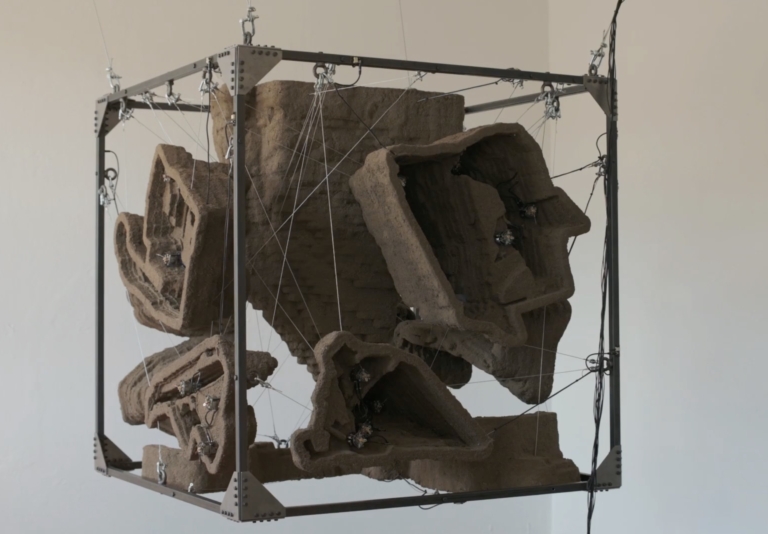
61.4223 invites viewers to experience the moment of contemplative observation of a transformed landscape. Comprised of sculptural representations of German open pit mines inside a 1m³ cube, and alongside mechanisms that mimic the movement of (counterpart) excavators, the installation visualizes exactly how many cubic meters of earth have been moved since the installation started.
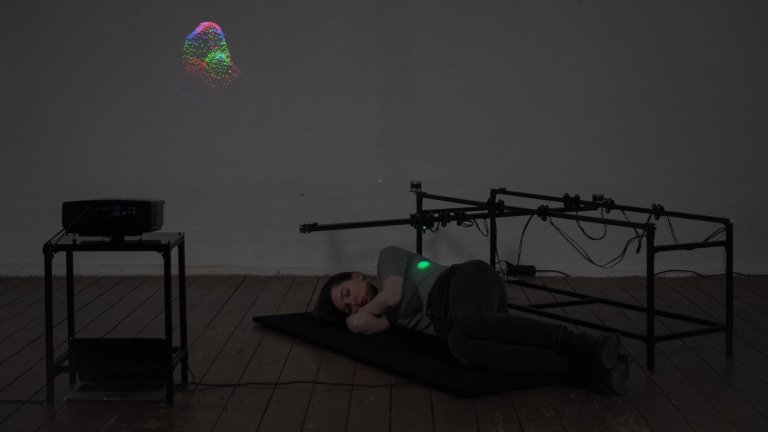
reated by Lotta Stöver, “Sleep Like Mountains” enacts a process of digital embedding and embodying. The installation measures the topography of a human body and compares it to geodata sets of Earth, searching for a most similar location, where the topography of the human body and Earth elevate and digitally situate in similar ways.
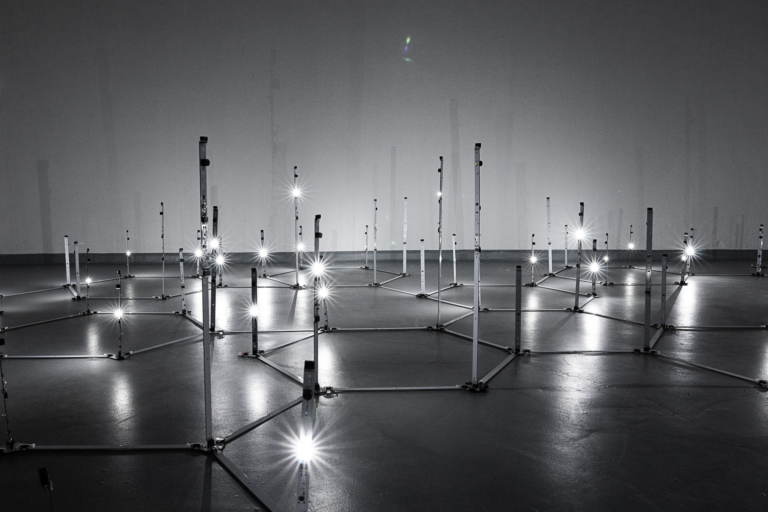
‘Floating Codes’ is a site-specific light and sound installation that explores the inner workings and hidden aesthetics of artificial neural networks – the fundamental building blocks of machine learning systems or artificial intelligence. The exhibition space itself becomes a neural network that processes information, its constantly alternating environment (light conditions/day-night cycle) including the presence of the visitors.
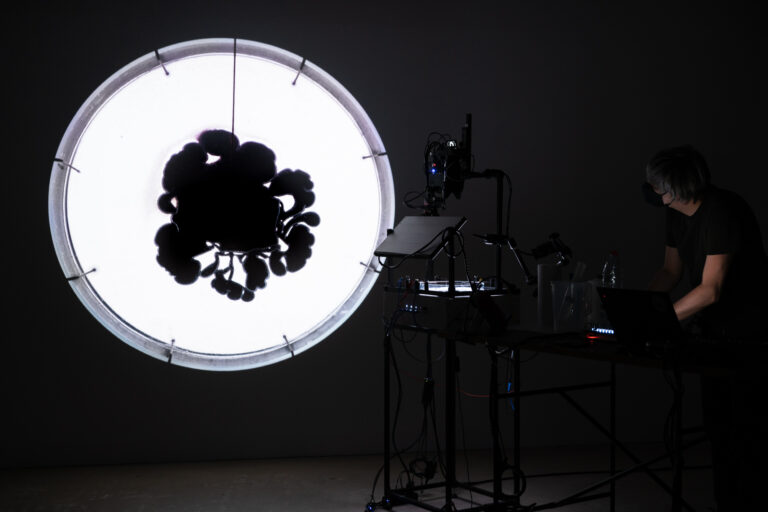
‘A Natural History of Networks / SoftMachine’ is an electrochemical algorithmic performance that probes an alternative computational and technological material regime.
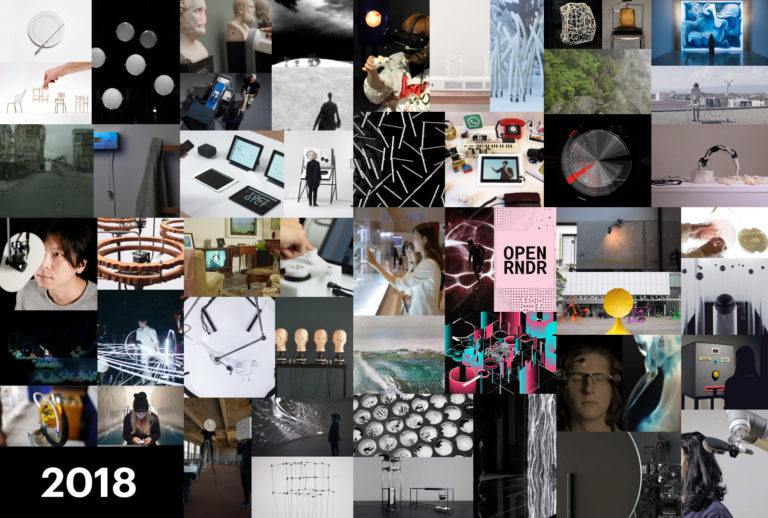
As 2018 comes to a close, we take a moment to look back at the outstanding work done this year. From spectacular machines, intricate tools and mesmerising performances and installations to the new mediums for artistic enquiry – so many great new projects have been added to the CAN archive! With your help we selected some favourites.
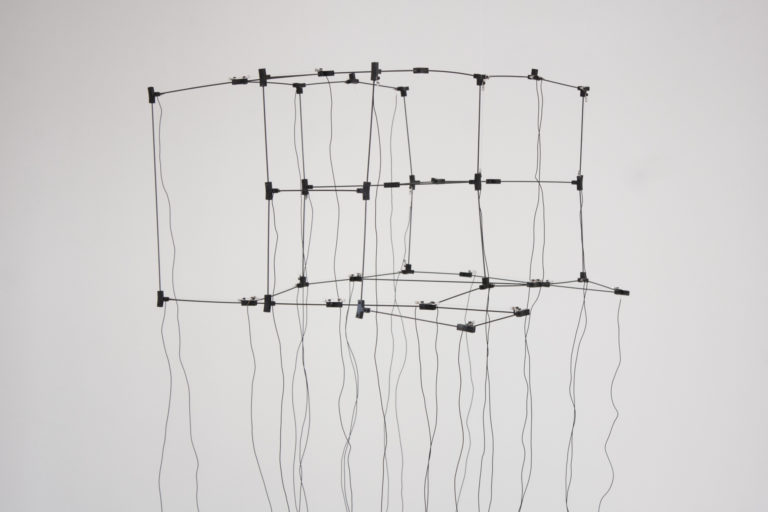
Created by Lotta Stöver at HfK Bremen, Mutiertes L-System is the physically grown L-System-Algorithm. From a software origin, it migrates into the physical world. By mutating and developing architectural structures it adapts to its new spatial environment.
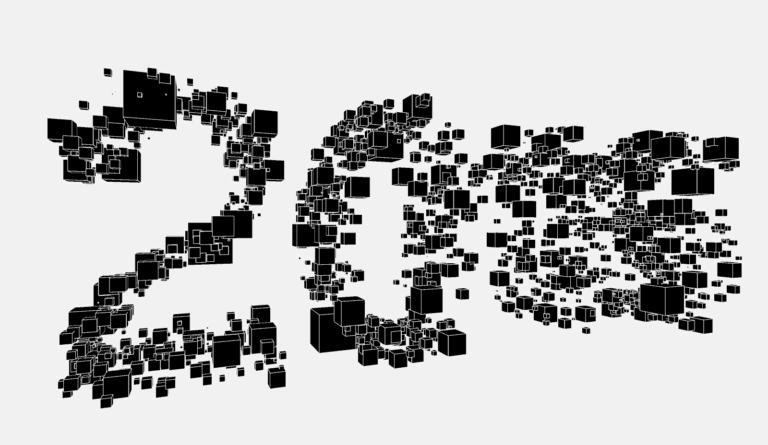
At its best, creative inquiry offers intellectual nourishment, empowerment and solace. At the end of 2016, we need all of those, which is why remembering – and celebrating – the outstanding work done this year is all the more important. Over the past twelve months we’ve added more than 100 projects to our archive – and with your help we’ve selected the favourite ones!
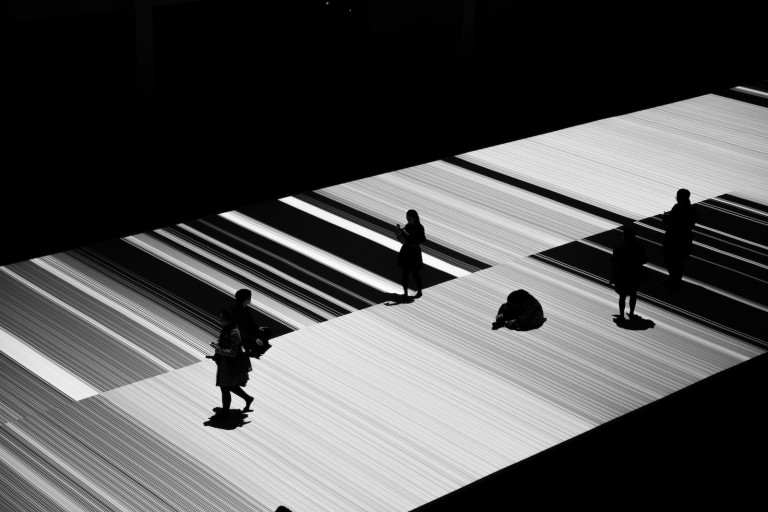
Huge stroboscopic datastreams, hypnotic human-machine choreographies, a cacophony of Korean, Japanese, English, German, and French – ten weeks ago, from November 25th to 28th 2015, an unlikely cross-cultural exchange took over the all new ACT Center in Gwangju, South Korea. More than a hundred artists, designers, curators, and educators answered our invitation to add their work and voice to the inaugural edition of ACT Festival, an opening celebration for the center’s monumental facilities.
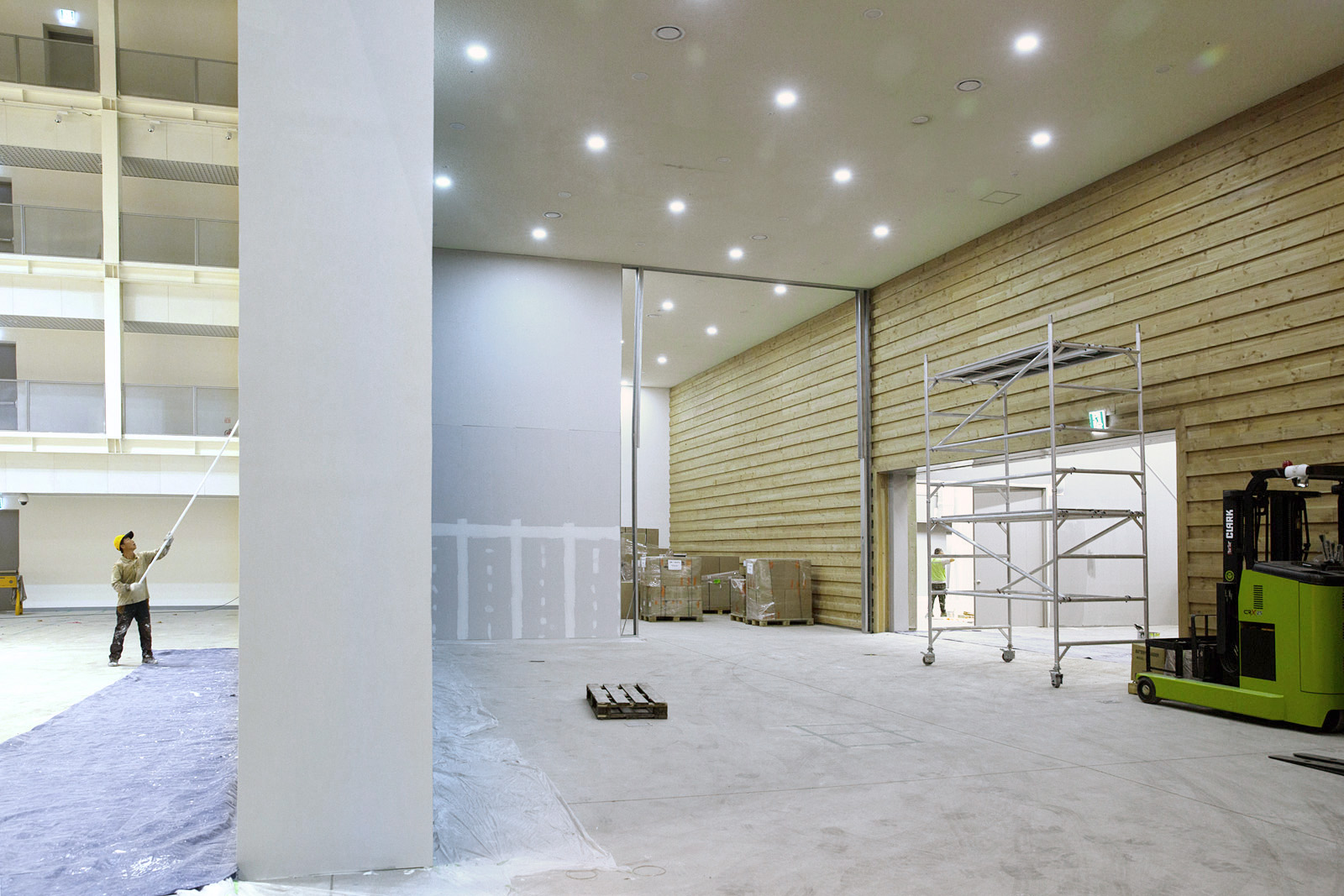
As the ACT Center in Gwangju, South Korea, and an all-star cast of more than sixty international artists, designers and cultural producers gear up for the inaugural edition of ACT Festival, the details of our four day program have begun to roll out – here are the highlights.
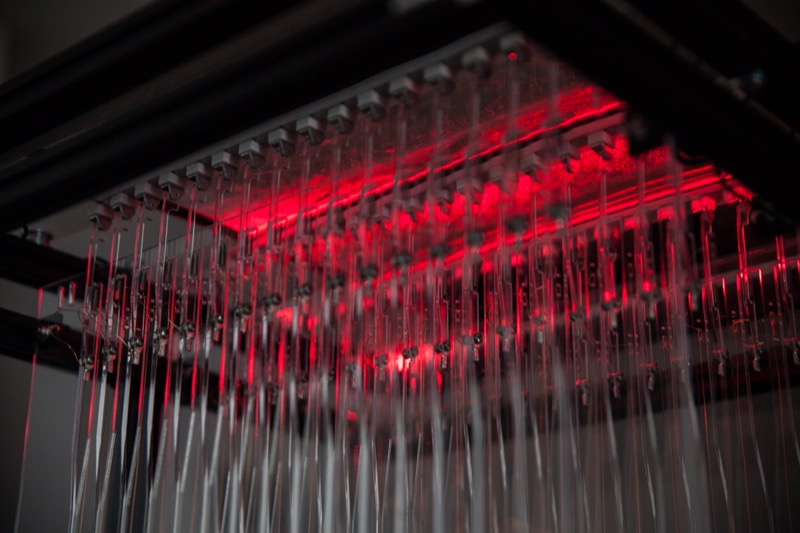
With The Subterranean theme FIBER Festival has a devised a metaphor to explore the politico-aesthetics of our digital world. In an extensive programme covering two days, the visitor can immersive him or herself in the shadowy world of new aesthetics and interactive forms, created by artists whose toolboxes extend to online communities, dark patterns, data and algorithms.

